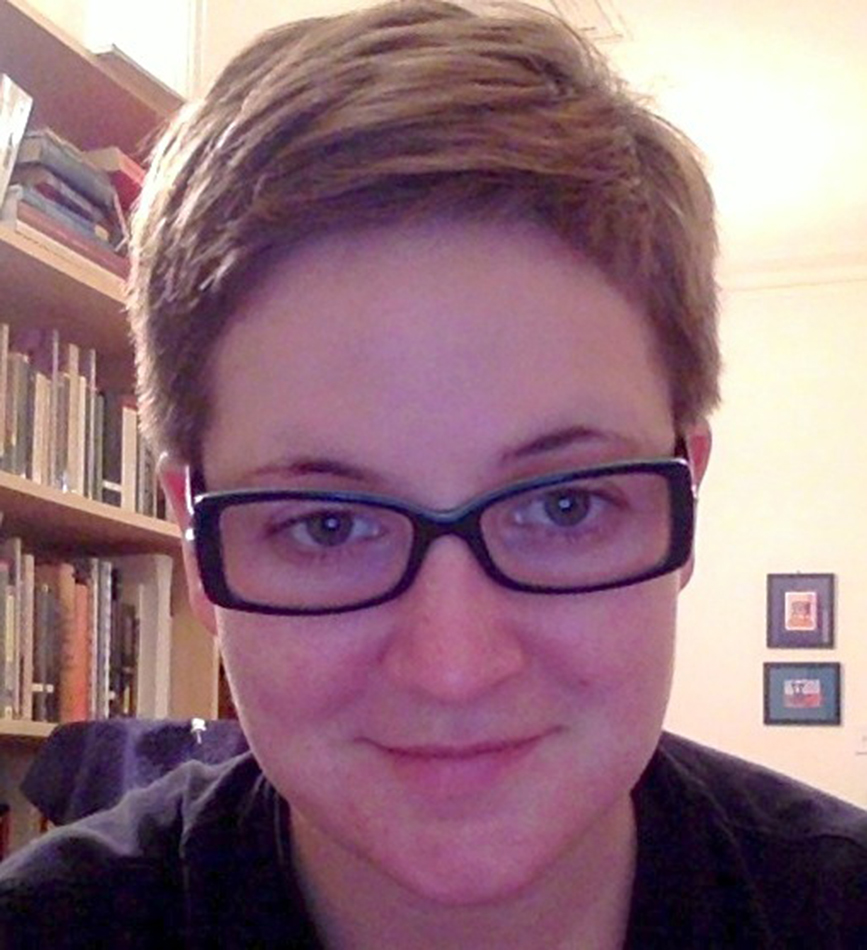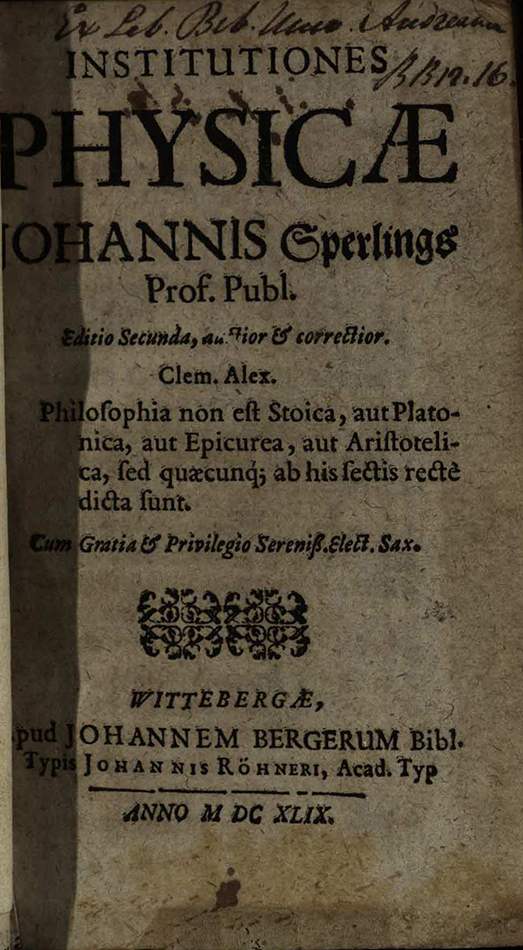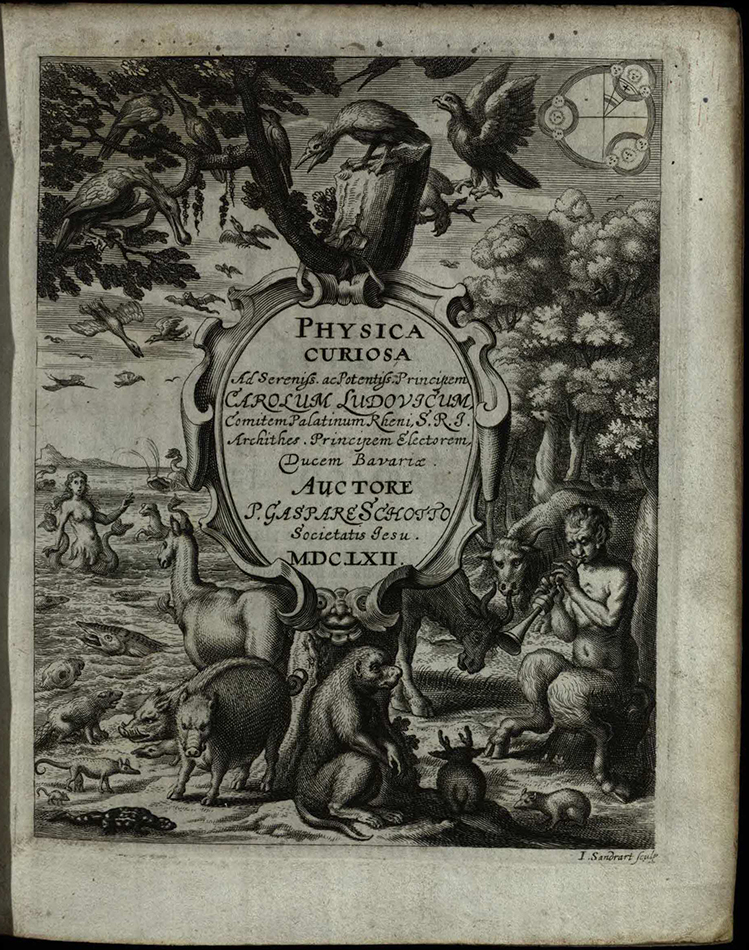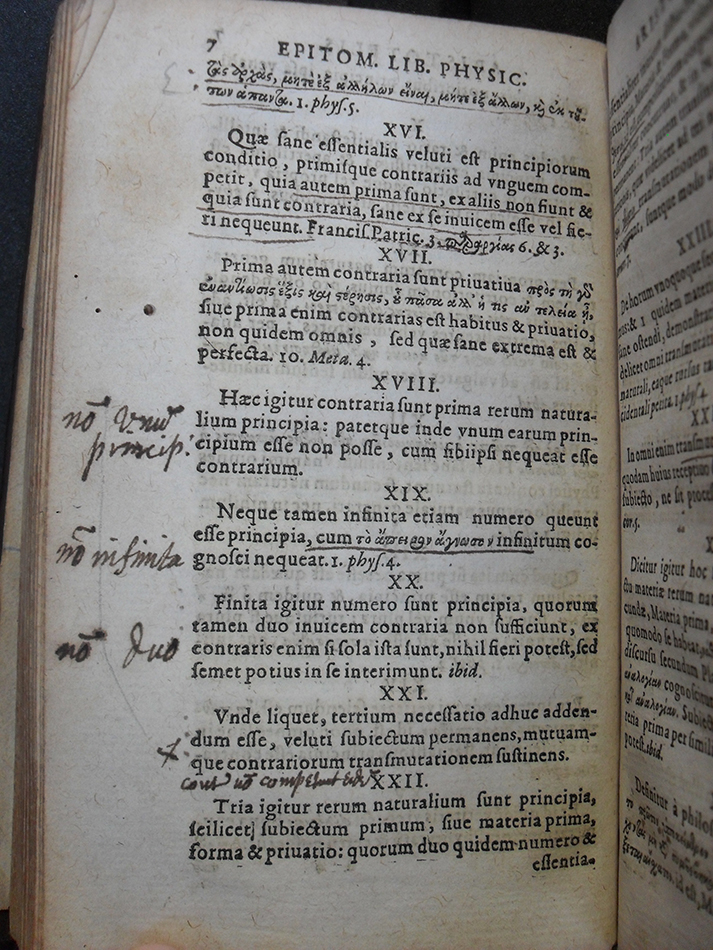Special Collections Visiting Scholars – Early Modern Physics in Special Collections
Our next Visiting Scholars blog is from Liza Blake who spent three weeks in our reading room in July as part of the 2014 Visiting Scholarship Programme. It was a pleasure to have her visit Special Collections and we are glad that her trip proved valuable for her research in Early Modern Literary Physics.

I am unfortunately no longer in grade school, but if I were, and someone were to ask me what I did on my summer vacation, I could respond that I spent almost a month with a number of dead people while they contemplated the nature of the universe.
I had the pleasure of such an unusual summer thanks to the St Andrews Special Collections Visiting Scholarship. I spent the majority of my time in the library completing research for the introduction of my current book project, Early Modern Literary Physics. In the book I argue that literary texts of the English Renaissance are doing physics – that is to say, they are using their poems, plays, and fictional narratives to ask, explore, and argue about fundamental questions about the nature of the physical world, what it is made of, and how it operates.
While the majority of my book is occupied with giving readings of literary texts to show their investment in and contribution to conversations about physics, the introduction proposes to write a new history of what we should think about when we think about physics. Most contemporary histories of physics are interested only in the pre-history of what we think of as physics today – usually, a mathematical science that studies the motions, forces, and causes of inanimate bodies. But physics – often referred to as physiologia in the early modern period – was a much more capacious concept, and included not only what we might consider to be physics, but also physiology (the study of living forms), cosmology (questions about the basic makeup of the universe), and natural philosophy.

My research in St Andrews will help me paint a more comprehensive picture of the amount of physics-making that happened among early modern authors and thinkers. The early modern period inherited from classical and medieval authors a number of physical systems: Aristotelian hylo-morphic physics, Platonic idealist physics, Pythagorean and Ovidian metamorphic physics, Lucretian and Epicurean atomistic physics, Stoic physics, etc. While in the St Andrews Special Collections reading room, however, I found a number of texts that joyously smash these different physics together to create new ones. Johannes Sperling’s Institutiones Physicae (1649), for example, argues even on its title page for an eclectic physics: “Philosophy,” the subtitle reads, “is not Stoic, or Platonic, or Epicurean, or Aristotelian, but whatever from these sects is correct.” (r17 Q155.S7C49). William Charleton, likewise, advertises the composite nature of his physics on his title page in his 1654 Physiologia Epicuro-Gassendo-Charltoniana, a mash-up of the physics of the ancient author Epicurus, the modern French Epicurean commentator Gassendi, and himself (r17f QC17.C5).
While working with St Andrews Special Collections I began to understand the richness of the early modern intellectual world with respect to theories of nature. By looking through the shelf slips for the Special Collection’s incredible – but largely uncatalogued – seventeenth-century collection, I found a number of incredible examples of physics. William Gilbert, in 1601, founded a Nova Physiologia or new physics that centered around magnets and magnetism (For QC751.G5). I discovered an English translation of Joanne Baptisa van Helmont’s Oriatrike or, Physick Refined (1662), which argued that fire was not one of the four elements and that, therefore, medicine will need to adapt itself to his newly founded understanding of the universe (Alc C62HE.EL). My favorite discovery was of Gaspar Schott’s Physica Curiosa (1622), or “Curious” physics, in which Schott delivers “physical” or natural explanations of angels, ghosts, and other supernatural entities (r17 QA33.S3P5).

I also found a few interesting specimens that could help me challenge the idea, insofar as it remains, that the “rise” of science was as complete, sudden, and systematic as commentators late in the century imagined it to be. While science was heralded in the period itself as coming from the denunciation of Aristotelianism, I read in the St Andrews Special Collections many editions and epitomes or summaries of Aristotle. I also found one example where an early epitome from 1614 was marked up by someone whose handwriting looks to be from as much as half a century later (r17 PA3903.Z7V6). Likewise, while Robert Boyle in his Physiological Essays actively campaigned against physics-writing and was instrumental in the disappearance of early modern physics as my project describes it, I also discovered in the St Andrews collections a pamphlet he published on the “Systematicall or Cosmologicall Qualities of Things.” (St Andrews r17 QC17.B7, sig. D6v).

Armed with my notes from the St Andrews Special Collections, I feel that I am well on my way to amassing the amount of data I will need to write the history of physics, and in particular the study of the word and concept physiologia. I am incredibly grateful to St Andrews for affording me an opportunity to explore their rich and deep collections, and even more grateful to the Special Collections staff for making me feel welcome and helping me to locate the number and quality of texts that they did.
Liza Blake
University of Toronto